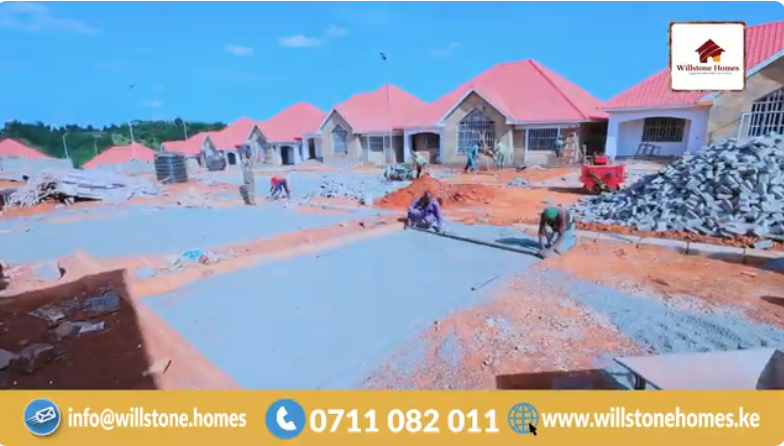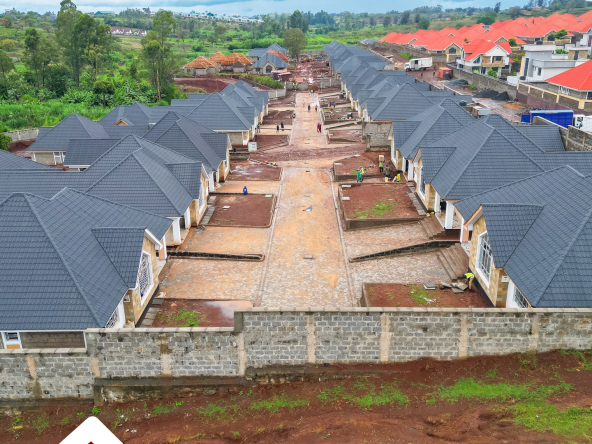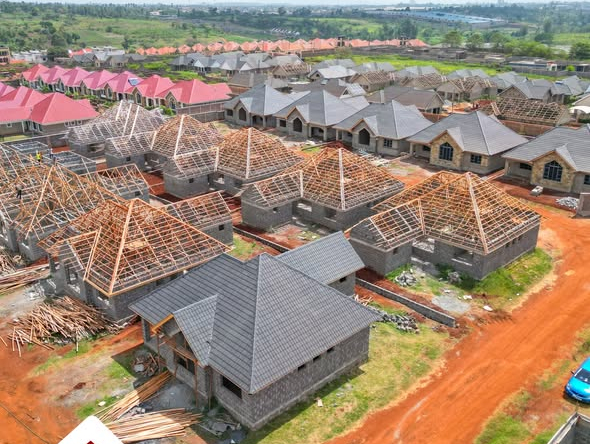Kenya’s property market in 2025 stands in rare company — not merely growing, but outpacing some of the world’s biggest real estate economies. According to the September 2025 HassConsult report, Kenya’s property prices rose 7.8 percent year-on-year to June 2025, outperforming global benchmarks in Australia, the United Kingdom, and the United States.
This performance underscores a remarkable reality: the Kenya Property Market 2025 has become a model of self-propelled growth driven by fundamentals rather than speculation.
Contact Us
- Park Suites, 44 Parklands Road, Ground Floor, Suite 1, Willstone Homes
- +254711082011
- [email protected]
A Market Defying Gravity
While property prices in many advanced economies cooled under rising interest rates, Kenya’s real estate sector surged.
Analysts attribute this resilience to one key factor — low mortgage penetration. Less than 2 percent of Kenyan homes are financed through mortgages, compared to more than 70 percent in Western markets.
This insulation from global credit shocks allowed prices to remain stable while other nations saw housing slowdowns.
The result?
A combined average return of 13.28 percent for Kenyan property investors in the year ending June 2025 — a figure unmatched in most international markets.
Read Also: The Evolving Heart of Homeownership: Real Estate Trends Redefining How Kenyans Want to Live
Off-Plan Developments Drive Exceptional Gains

Kenya’s real estate story in 2025 isn’t just about appreciation — it’s also about creativity. Off-plan housing projects, particularly in Nairobi’s emerging suburbs, generated average returns of 18.06 percent.
Developers have mastered the balance between affordability and luxury, drawing in local buyers and diaspora investors seeking value growth and rental yields above 5 percent.
Suburbs such as Thindigua, Ruiru, Athi River, and Syokimau continue to outperform due to improved infrastructure and flexible payment plans that attract first-time homeowners and mid-income earners alike.
Outpacing International Property Markets
The Kenya Property Market 2025 now ranks among the top performers globally — not because of speculative inflows, but because of genuine demand.
As The Star Kenya and CNBC Africa reported in September 2025, the country’s market “widened its lead compared to nine major global property markets,” showing rare consistency in both rental and capital growth.
Where nations like Canada and the UK have seen negative growth due to interest-rate hikes, Nairobi’s balanced blend of rental demand, construction activity, and controlled supply has created a strong long-term investment environment.
Local Investors, Global Confidence
One of the most encouraging indicators is that Kenya’s property growth is locally funded.
Rather than relying on external credit, the sector thrives on savings, SACCO funding, and small-scale developer capital, keeping the cycle organic and less exposed to global downturns.
This makes Kenya a standout case of sustainable real estate expansion — growth from within.
For international investors, the appeal lies in both yield and stability. Rental returns averaging 5.5 percent surpass the global average of 3–4 percent, while land and off-plan units continue to appreciate steadily despite macroeconomic pressure.
Snapshot: Kenya vs. Global Property Growth (2025)
| Market | Avg. Annual Price Growth | Avg. Rental Yield | Notable Trend |
|---|---|---|---|
| Kenya | 7.8 % | 5.5 % | Off-plan & suburban growth |
| United Kingdom | –1.3 % | 3.2 % | Mortgage-driven cooling |
| Australia | 2.1 % | 3.6 % | Stabilization post-rate cuts |
| United States | 1.8 % | 3.9 % | High inflation pressures |
| Switzerland | 0.5 % | 2.5 % | Flat luxury market |
(Source: HassConsult Q2 2025 Report, Knight Frank Global Index 2025)
Why Kenya’s Growth Model Matters

Kenya’s real estate evolution provides a rare example of bottom-up market maturity. With developers targeting middle-income buyers and government incentives supporting affordable housing, growth has become both inclusive and regionally diversified.
Counties such as Kiambu, Machakos, and Kajiado now anchor expansion beyond Nairobi, strengthening nationwide economic linkages.
Moreover, the rise of REITs and digital property platforms is improving transparency and investor access, aligning Kenya’s housing market closer to global standards while retaining local adaptability.
Read Also: Kenyan Real Estate Market 2025: Knight Frank Report Shows 5.6% Growth as Nairobi Leads Recovery
The Road Ahead
Looking forward, the Kenya Property Market 2025 is expected to maintain its lead into 2026, with projected growth between 6 and 8 percent, according to legal and financial analysts.
However, continued progress will depend on infrastructure expansion, consistent policy enforcement, and credit-market reforms to improve home financing accessibility.
For investors eyeing Africa, Kenya represents more than an emerging market — it’s a benchmark of property resilience in a world where housing bubbles are deflating elsewhere.
The Kenya Property Market 2025 proves that sustainable growth doesn’t require excessive credit or speculative cycles.
Driven by demand, discipline, and diversification, Kenya’s real estate sector now sets the pace for developing economies — and increasingly, for the world.





